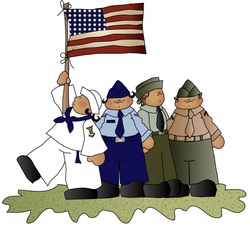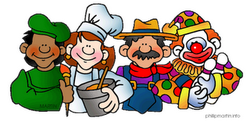
Second quater is coming to a close!! WHAT?!? When did this time pass?! Assessments are in full swing in all subject areas, including math and working with teen numbers, describing shapes and counting to at least 40. In writing he/she will be expected to write 1-2 sentences on his or her own, with sight words and phonetic spelling, matching the picture that he/she drew. In reading, sounding out short words, counting syllables in words, producing rhyming words and finally, all children must read and pass the first level of guided reading books in just 3 short weeks from now!
Level "B", or 1-2 books, are FULL of sight words and repetative sentences. Your child should catch on to the pattern quite easily by this point in the school year.
If your child is already doing these things, please refer to the resouces I'm sending home throughout these weeks so to always keep them interested, engaged and challenged! It's what we feel is of the utmost importance in the classroom, too! If you volunteer, you won't see many children working on the same task for this very reason :)
FYI, we have Guidance this week.
Here are some important dates to jot down:
Wednesday, November 27th: Our Classroom "Friendly Feast" in celebratoin of
Thanksgiving. Families are invited!! 12:30-1:30
November 28-29: Thanksgiving Holiday, no school
Wednesday, December 4th: Report Cards are sent home. Merry Christmas!!!
Happy Track Out!!!!
Here's what we are up to in our busy classroom this week!
Thematic Unit: Veterans & Community Helpers
Readers Study Patterns in Books (big and small)
Determine or clarify the meaning of unknown and multiple-meaning words and phrases based on kindergarten reading and content. Identify new meanings for familiar words and apply them accurately (e.g., knowing duck is a bird and learning the verb to duck).
Use the most frequently occurring inflections and aaffixes (e.g., -ed, -s, un, pre, -ful, -less) as a clue to the meaning of an unknown word. (in speaking and shared language activites)
With guidance and support from adults, explore word relationships and nuances in word meanings. Demonstrate understanding of frequently occurring verbs and adjectives by relating them to their opposites (antonyms).
Demonstrate understanding of spoken words, syllables, and sounds (phonemes). Blend and segment onsets and rimes of single syllable spoken words.
Ask and answer questions about unknown words in a text.
Ask and answer questions about unknown words in a text.
Writing for Readers: Writing TRUE stories
Use a combination of drawing, dictating, and writing to narrate a single event or loosely linked events, tell about the events in the order in which they occurred, and provide a reaction to what happened.
With guidance and support from adults, respond to questions and strrengthen writing as needed.
I hope the resources I've been sending home are shedding more light on the development of writing!
Shapes, shapes, shapes
Describe objects in the environment using names of shapes, and describe the relative positions of these objects using terms such as above, below, beside, in front of, behind, and next to.
Correctly name shapes regardless of their orientations or overall size
Identify shapes as two-dimensional (lying in a plane, "flat") or three-dimensional ("solid").
Analyze and compare two- and three-dimensional shapes, in different sizes and orientations, using informal language to describe their similarities, differences, parts (e.g., number of sides and vertices/"corners") and other attributes (e.g., having sides of equal length).
Model shapes in the world by building shapes from components (e.g., sticks and clay balls) and drawing shapes.
I hope you have a fantastic week!!!!
Level "B", or 1-2 books, are FULL of sight words and repetative sentences. Your child should catch on to the pattern quite easily by this point in the school year.
If your child is already doing these things, please refer to the resouces I'm sending home throughout these weeks so to always keep them interested, engaged and challenged! It's what we feel is of the utmost importance in the classroom, too! If you volunteer, you won't see many children working on the same task for this very reason :)
FYI, we have Guidance this week.
Here are some important dates to jot down:
Wednesday, November 27th: Our Classroom "Friendly Feast" in celebratoin of
Thanksgiving. Families are invited!! 12:30-1:30
November 28-29: Thanksgiving Holiday, no school
Wednesday, December 4th: Report Cards are sent home. Merry Christmas!!!
Happy Track Out!!!!
Here's what we are up to in our busy classroom this week!
Thematic Unit: Veterans & Community Helpers
Readers Study Patterns in Books (big and small)
Determine or clarify the meaning of unknown and multiple-meaning words and phrases based on kindergarten reading and content. Identify new meanings for familiar words and apply them accurately (e.g., knowing duck is a bird and learning the verb to duck).
Use the most frequently occurring inflections and aaffixes (e.g., -ed, -s, un, pre, -ful, -less) as a clue to the meaning of an unknown word. (in speaking and shared language activites)
With guidance and support from adults, explore word relationships and nuances in word meanings. Demonstrate understanding of frequently occurring verbs and adjectives by relating them to their opposites (antonyms).
Demonstrate understanding of spoken words, syllables, and sounds (phonemes). Blend and segment onsets and rimes of single syllable spoken words.
Ask and answer questions about unknown words in a text.
Ask and answer questions about unknown words in a text.
Writing for Readers: Writing TRUE stories
Use a combination of drawing, dictating, and writing to narrate a single event or loosely linked events, tell about the events in the order in which they occurred, and provide a reaction to what happened.
With guidance and support from adults, respond to questions and strrengthen writing as needed.
I hope the resources I've been sending home are shedding more light on the development of writing!
Shapes, shapes, shapes
Describe objects in the environment using names of shapes, and describe the relative positions of these objects using terms such as above, below, beside, in front of, behind, and next to.
Correctly name shapes regardless of their orientations or overall size
Identify shapes as two-dimensional (lying in a plane, "flat") or three-dimensional ("solid").
Analyze and compare two- and three-dimensional shapes, in different sizes and orientations, using informal language to describe their similarities, differences, parts (e.g., number of sides and vertices/"corners") and other attributes (e.g., having sides of equal length).
Model shapes in the world by building shapes from components (e.g., sticks and clay balls) and drawing shapes.
I hope you have a fantastic week!!!!

 RSS Feed
RSS Feed